9 reasons to put a global fixed price on carbon
1. People and firms pollute for free.
People do not pay for crop spoilage from droughts, air pollution-related health care costs and damage to infrastructure after flooding or sea-level rise (external costs outside market transactions). By giving carbon a fixed price, we send a strong message to all citizens of our planet that our environment is a global public good and actions that put it at risk must be paid for.

Pollution in Guatemala City from vehicle emissions. Photo: Doron Derek Laor via Flickr.
2. It’s fairer.
A fixed carbon price can be implemented via a bonus-malus system, which is based on the average emissions per head per year, in which countries emitting more than the world average should pay a penalty (they are polluters), and countries below this bar would receive a bonus (they are beneficiaries). The Climate Economics Chair of Paris-Dauphine University proposed this solution as the world average (5 ton / capita in 2013) can hide a huge disparity: 16 ton for an Australian and 0.1 ton for an Ethiopian. A bonus-malus system provides a balance between the contributions coming from the biggest polluters (‘penalty’ countries) and the subsidies going to beneficiary countries (‘bonus’ countries).
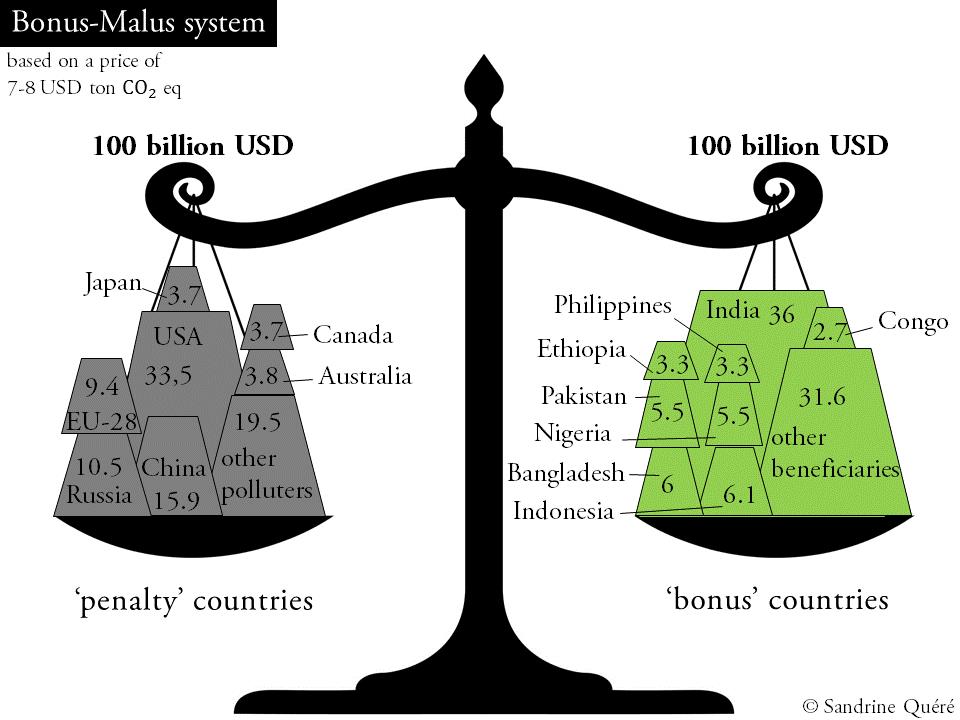 Bonus-Malus system: balance between the sum of contributions coming from the main polluters and the sum of subsidies going to beneficiaries countries. Source: Sandrine Quéré 2015.
Bonus-Malus system: balance between the sum of contributions coming from the main polluters and the sum of subsidies going to beneficiaries countries. Source: Sandrine Quéré 2015.
3. We can start relatively cheap.
The Climate Economics Chair of Paris-Dauphine University suggests a price of 7-8 USD CO2 eq per tonne given before 2020. This price has been specifically chosen because the sum of all the contributions will generate around 100 billion USD per year (a different price would provide a different sum). This amount corresponds to the funding pledged during Copenhagen 2009 and Cancun 2010 for the Green Climate Fund. But so far, the money has not materialised.
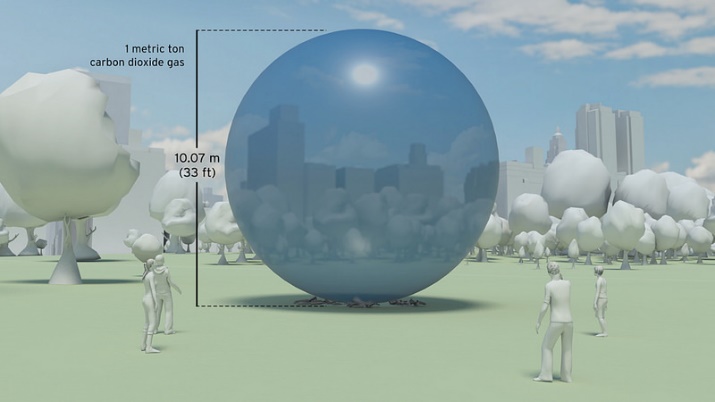 One metric tonne of CO2. Source: Carbon Visuals via Flickr
One metric tonne of CO2. Source: Carbon Visuals via Flickr
4. It will provide much needed certainty for investors.
A stable price will prevent investors from speculating on a preferred carbon market, which encourages price volatility. A fixed price will provide certainty where uncertainty exists in the growth production forecast, in renewable energy investments and in future energy efficiency assessment.
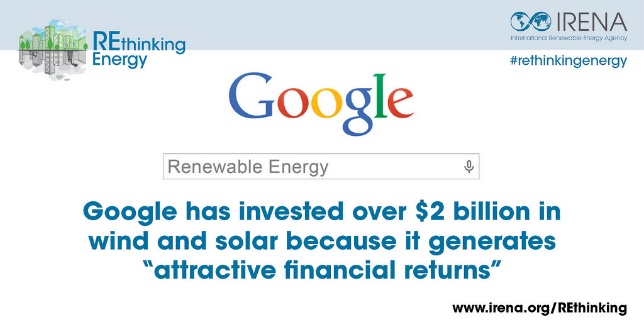 Source: International Renewable Energy Agency via Flickr
Source: International Renewable Energy Agency via Flickr
5. It costs us more to do nothing.
The Stern Review (2006) estimates that the economic impact of climate change will correspond to 5,500 billion Euros by the year 2100 if no action is taken. The costs of adaptation and mitigation will rise sharply with higher mean surface temperatures.

Assessment of the damage caused by flooding in the Bangkok area in 2011. Photo: DVIDSHUB via Flickr.
6. It's already (kind of) happening.
Several advanced economies from Western Europe and Scandinavia have adopted a hybrid system, based on a carbon tax and a carbon market. China and USA, the two main polluters of the planet, have signed a climate accord. Canada and the USA have started linking their cap-and-trade systems, such as the California-Quebec Agreement, which had to overcome two different juridical settings – the common law and civil code. Applying a fixed carbon price is one of the best solutions to standardise markets.
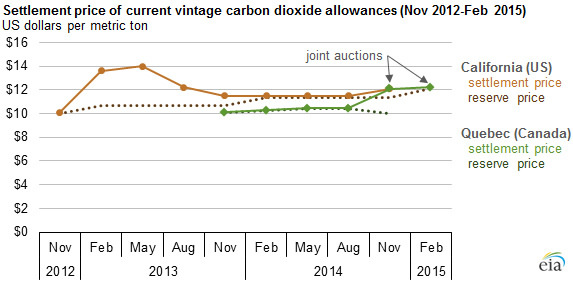 Settlement price of current vintage carbon dioxide allowances. Source: U.S. Energy Information Administration via Flickr.
Settlement price of current vintage carbon dioxide allowances. Source: U.S. Energy Information Administration via Flickr.
7. It will finance climate action.
With 100 billion USD generated per year from now on, we could already finance international climate actions, as part of the Green Climate Fund, including North-South financial transfers. This would provide much-needed investment in renewable energy, sustainable development and new green jobs.
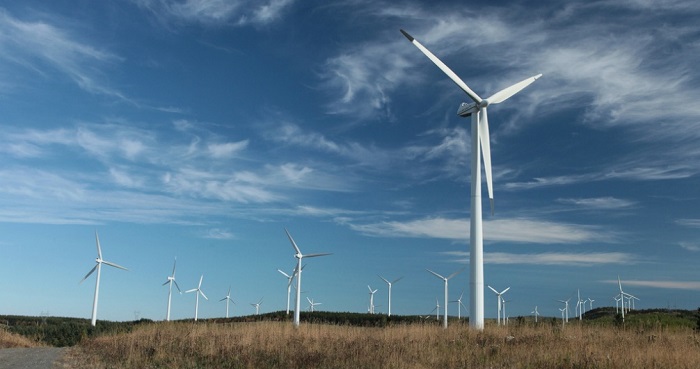
Wind turbines at Cap-Chat, Québec. Photo by Denis-Carl Robidoux via Flickr.
8. It will motivate us to consume less.
The main advantage of an international signal-price being that I, you, all the citizens of our planet, we will all have the possibility of knowing how much we pollute, and how much we have to pay for it. The theory of change here is that this will motivate us to consume less. For example, since British Columbia introduced a carbon tax in 2008, fuel use dropped by 16 %, whereas it increased by 3 % in the rest of Canada.
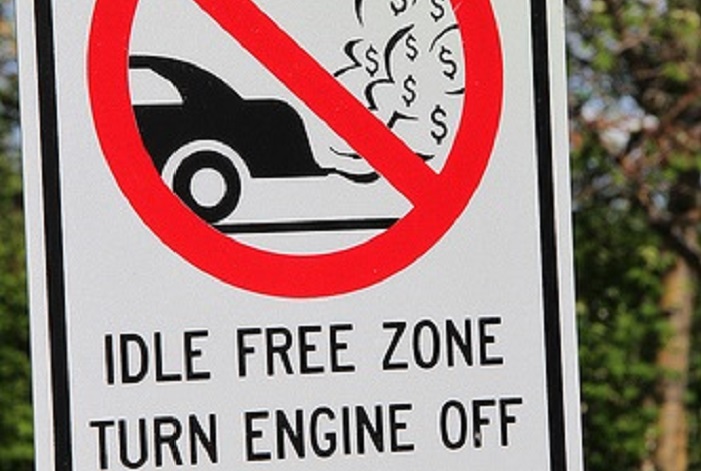
Idle Free Zone in British Columbia. Photo by David Dodge, Green Energy Futures via Flickr.
9. Last but not least, it will be an international accomplishment that we could all be proud of.
A global fixed price on carbon will show that we can all get along and move forward together for the preservation of the planet. As we already did for the ozone layer protection thanks to the Vienna Convention.
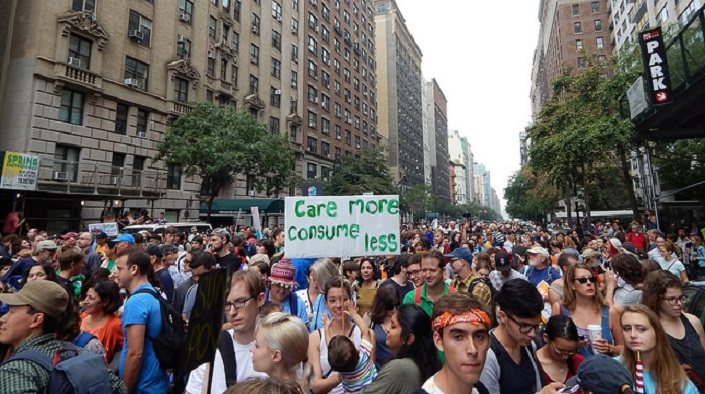 NYC People’s climate march, Sept. 2014. Photo by Taymaz Valley via Flickr.
NYC People’s climate march, Sept. 2014. Photo by Taymaz Valley via Flickr.
A special thank you to Future Earth’s Michelle Kovacevic and Owen Gaffney for useful advice and edits, following the Future Earth #popupwebinars on 'How to write a science blog people want to read'.
DATE
November 11, 2015AUTHOR
Sandrine QuéréSHARE WITH YOUR NETWORK
RELATED POSTS
The Green Energy Surge Still Isn’t Enough for 1.5 degrees. We’ll Have to Overshoot, Adapt and Soak Up Carbon Dioxide
Unmasking our Carbon and Climate Futures
New IPCC Report: “Further Delay Too Dangerous, Current Climate Plans Inadequate,” Scientists Say